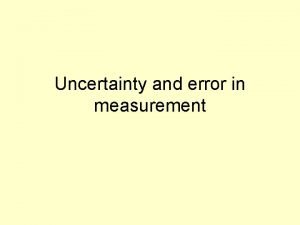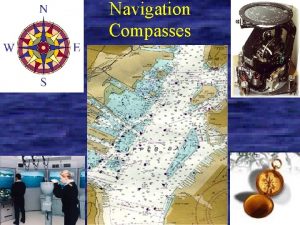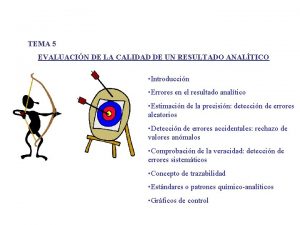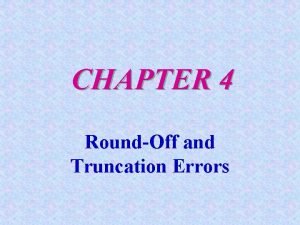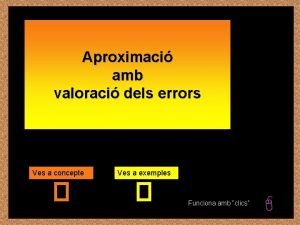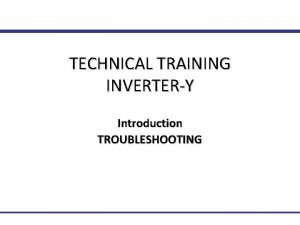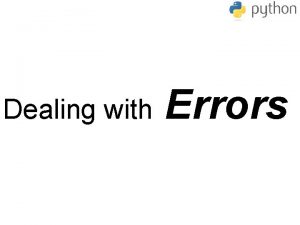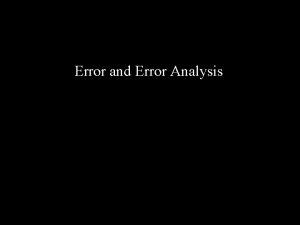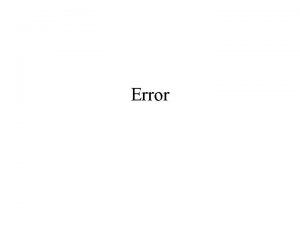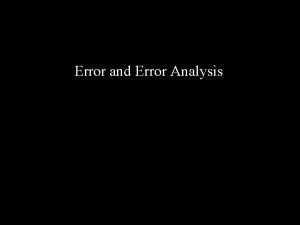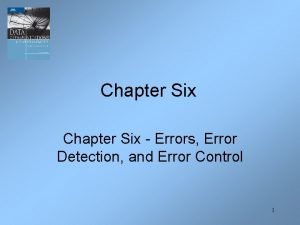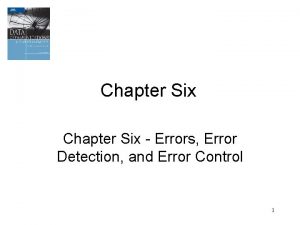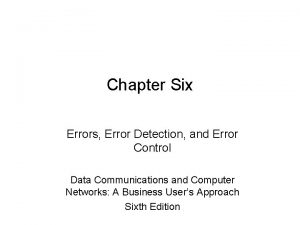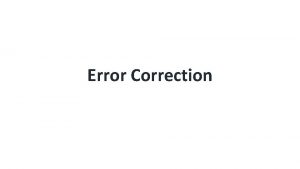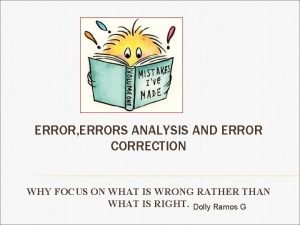Error in measurements Errors in measurements Errors which












- Slides: 12

Error in measurements

Errors in measurements Errors which can be eliminated 1. Calamitous or catastrophic error 2. Alignment error 3. Errors due to ambient conditions 4. Errors due to elastic deformation Errors which can’t be eliminated 1. Scale errors. 2. Reading errors. 3. Measuring errors

Errors which can be eliminated

Calamitous or catastrophic error 1. Misreading an instrument. Example: a micrometer is misread as 6. 28 or 5. 78 instead of the correct reading 5. 28

Calamitous or catastrophic error 2. Arithmetic error. They are usually errors of additions. A simple check is to do the calculations twice using different methods.

Alignment error This type of error occurs when the measuring instrument is misaligned relative to the work piece.

Errors due to ambient conditions • The most important condition is the temperature, both of the work piece and of its surrounding. • The international standard temperature of measurement is 20 C.

Errors due to Elastic deformation • any elastic body subject to a load will undergo elastic deformation. • The magnitude of the deformation will depend upon the magnitude of the load, the area of contact and the mechanical properties

Errors which can’t be eliminated

Scale errors • If the scale against which a measurement is made in error , then obviously the measurement will be in error.

Reading errors • How accurately can a scale be read? This depends upon the thickness of the ruler, the spacing of the scale divisions, and the thickness of the pointer.

 Random errors may be detected by repeating the measurements
Random errors may be detected by repeating the measurements Type 1 or type 2 error statistics
Type 1 or type 2 error statistics Type 1 error vs type 2 error example
Type 1 error vs type 2 error example Can a dead man gyro error
Can a dead man gyro error Alternative hypothesis
Alternative hypothesis Random and systematic errors examples
Random and systematic errors examples Power series form
Power series form Error sistematico
Error sistematico Error
Error Sesgo de seleccion
Sesgo de seleccion Difference between round-off error and truncation error
Difference between round-off error and truncation error Error absolut i error relatiu
Error absolut i error relatiu Invertery
Invertery
